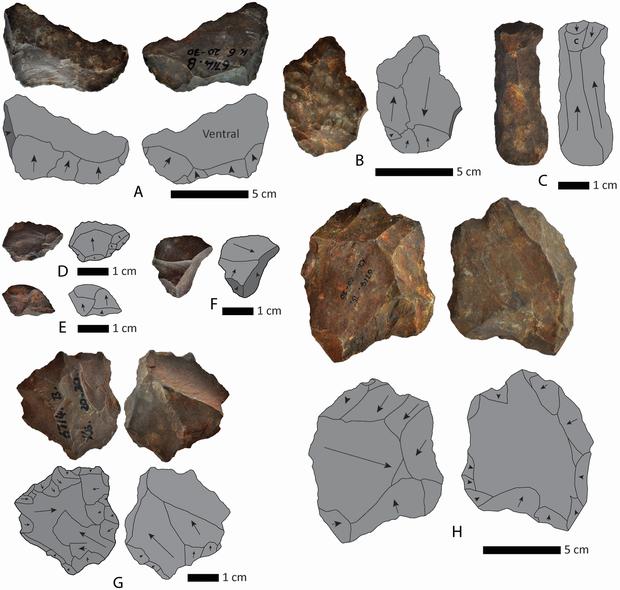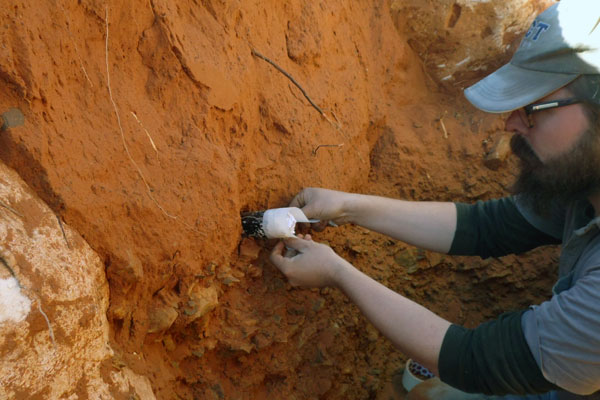Excavations at an archaeological site at Kathu in the Northern Cape province of South Africa,
one of the richest early prehistoric archaeological sites in South Africa, have produced tens of thousands of Earlier Stone Age artifacts, including hand axes and other tools.
It is situated between the Kuruman Hills to the east and the Langberge mountains to the west and estimated to be between 700,000 and one million years old.
Steven James Walker from the Department of Archaeology at the University of Cape Town, lead author of a new paper about discoveries from the site, says, "The site is amazing and it is threatened. We've been working well with developers as well as the South African Heritage Resources Agency to preserve it, but the town of Kathu is rapidly expanding around the site. It might get cut off on all sides by development and this would be regrettable."

Flakes and cores from Kathu Townlands, Beaumont Excavation. A. Large flake off of the edge of the core consistent with biface shaping removal. B. Large flake with centripedal dorsal scars. C. Blade, note that there is some cortex (indicated by C in the sketch) and that scars are not parallel. D–F. Small flakes, note that F is off the edge of the core. G. Discoidal core with removals off both faces. Break on one edge (upper edge in right view). H. Discoidal core with one large flake removal. Note that on the right hand face the working is unclear and it is possible that this is a natural surface.
doi:10.1371/journal.pone.0103436
Today, Kathu is a major iron mining center. Walker adds that the fact that such an extensive prehistoric site is located in the middle of a zone of intensive development poses a unique challenge for archaeologists and developers to find strategies to work cooperatively.
The Kathu Townlands site is one component of a grouping of prehistoric sites known as the Kathu Complex. Other sites in the complex include Kathu Pan 1 which has produced fossils of animals such as elephants and hippos, as well as the earliest known evidence of tools used as spears from a level dated to half a million years ago. These new discoveries were made by archaeologists from the University of Cape Town and the University of Toronto, in collaboration with the McGregor Museum in Kimberley, South Africa.

Steven James Walker from the Department of Archaeology at UCT extracts a sample at the interface between the overlying red sands and the Earlier Stone Age archaeological deposits at the Kathu Townlands site. Photo by Vasa Lukich
Michael Chazan, Director of the Archaeology Centre at U of T, emphasizes the scientific challenge posed by the density of the traces of early human activity in this area.
"We need to imagine a landscape around Kathu that supported large populations of human ancestors, as well as large animals like hippos. All indications suggest that Kathu was much wetter, maybe more like the Okavango than the Kalahari. There is no question that the Kathu Complex presents unique opportunities to investigate the evolution of human ancestors in Southern Africa."






Comments